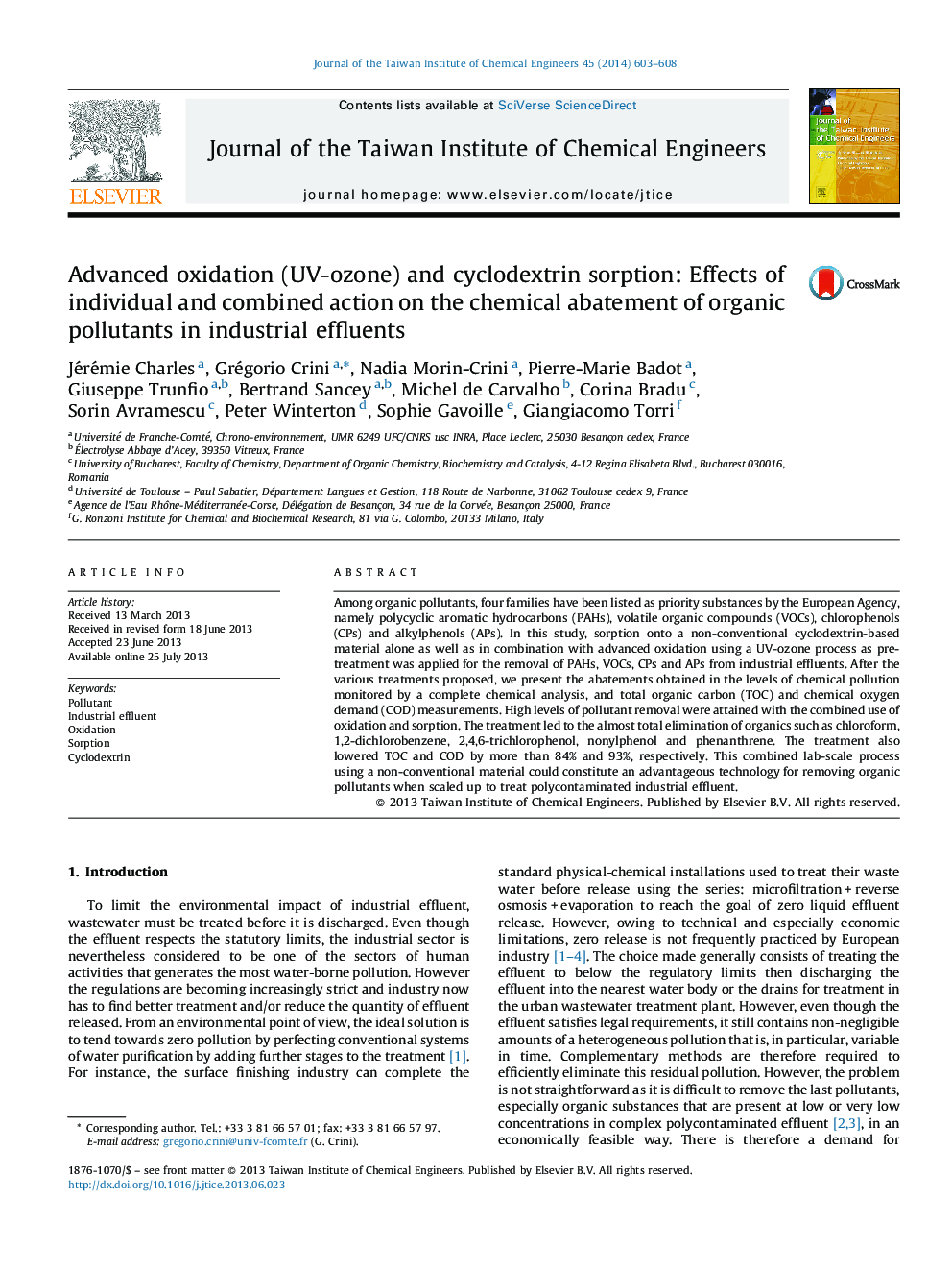| کد مقاله | کد نشریه | سال انتشار | مقاله انگلیسی | نسخه تمام متن |
|---|---|---|---|---|
| 691401 | 1460433 | 2014 | 6 صفحه PDF | دانلود رایگان |
• The removal of organic pollutants was investigated in industrial discharge waters.
• Advanced oxidation was combined with sorption onto cyclodextrin.
• After the combined treatment, high levels of pollutant removal were achieved.
• The treatment lowered total organic carbon and chemical oxygen demand efficiently.
• Advanced oxidation significantly improved the cyclodextrin-based sorption process.
Among organic pollutants, four families have been listed as priority substances by the European Agency, namely polycyclic aromatic hydrocarbons (PAHs), volatile organic compounds (VOCs), chlorophenols (CPs) and alkylphenols (APs). In this study, sorption onto a non-conventional cyclodextrin-based material alone as well as in combination with advanced oxidation using a UV-ozone process as pre-treatment was applied for the removal of PAHs, VOCs, CPs and APs from industrial effluents. After the various treatments proposed, we present the abatements obtained in the levels of chemical pollution monitored by a complete chemical analysis, and total organic carbon (TOC) and chemical oxygen demand (COD) measurements. High levels of pollutant removal were attained with the combined use of oxidation and sorption. The treatment led to the almost total elimination of organics such as chloroform, 1,2-dichlorobenzene, 2,4,6-trichlorophenol, nonylphenol and phenanthrene. The treatment also lowered TOC and COD by more than 84% and 93%, respectively. This combined lab-scale process using a non-conventional material could constitute an advantageous technology for removing organic pollutants when scaled up to treat polycontaminated industrial effluent.
Journal: Journal of the Taiwan Institute of Chemical Engineers - Volume 45, Issue 2, March 2014, Pages 603–608
